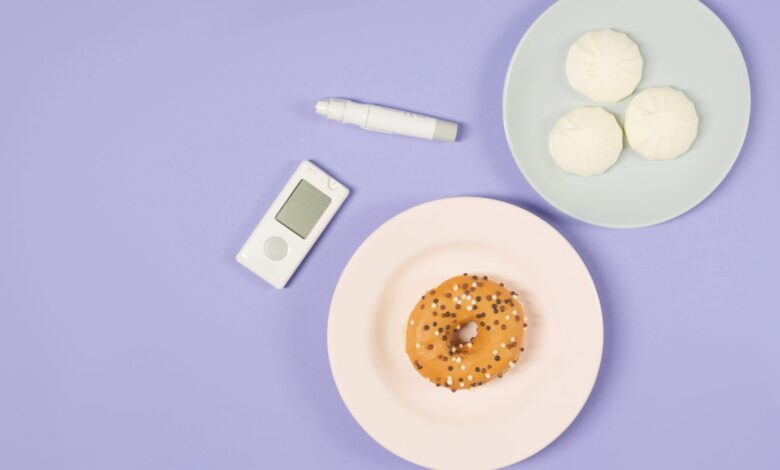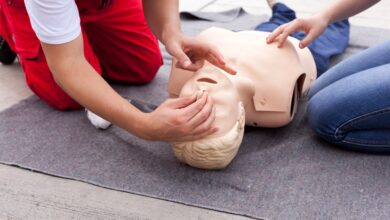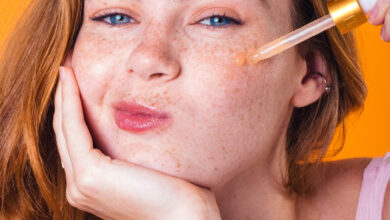8 Early Signs and Symptoms of Diabetes

Are you worried that diabetes might sneak up on you or your loved ones?
It’s unfortunate, but you should be.
Most people don’t know that they have diabetes before its diagnosis. This happens a lot with type 2 diabetes, where the symptoms can go unnoticed and aren’t as severe and fast to appear like those of type 1 diabetes.
The CDC reports that at least 100 million Americans are unaware they have prediabetes or have diabetes. This is more than double the population of Spain.
However, the good thing is you can avoid being part of these statistics by educating yourself about the symptoms of diabetes.
Remember, awareness is like winning half the fight.
In this post, we’ll take you through some early signs and symptoms that point towards diabetes.
You Experience Excess Peeing

Your body absorbs glucose for use as it passes through your kidneys. Diabetes increases the blood sugar level.
When blood sugar rises, the kidneys have an extra job of getting rid of the excess sugar from your system, which comes out of your body as urine. That’s why a diabetic person pees more than a healthy person.
If you notice frequent urination that often wakes you up at night, then consider getting your blood sugar levels checked.
Also, the loss of body fluids as a result of your pee trips causes dehydration. This triggers extreme thirst forcing you to take more fluids. With more fluid intake, the peeing cycle continues.
You’re Often Exhausted
Extreme fatigue is also a sign that your blood sugar is off the charts. Especially if you’ve been feeling exhausted and no amount of rest seems to relieve you.
Other diabetes-related symptoms such as dehydration or sleeplessness can also cause extreme fatigue.
Diabetes-related fatigue might make you feel dizzy or sometimes faint. Some people may not regain consciousness for a while in extreme cases as they fall into a diabetic coma.
We, therefore, advise that you watch out for extreme and persistent exhaustion.
Yeast Infection

Diabetes causes yeast infections for both men and women. Yeast thrives on glucose, which is excess if you have the disease.
Watch out for areas where the skin folds since they tend to get moist and are more vulnerable to yeast.
During the prediabetes and diabetes period, you may notice infections in and around these areas:
• Fingers and toes
• Mouth
• Armpits
• Urinary tract
• Under the breasts
How to prevent yeast infections
While people with diabetes are prone to yeast infection (also known as thrush), it can be prevented and treated when it occurs.
The secret is in controlling your blood sugar levels, which requires a bit of knowledge on how glucose is broken down in the body. Your GP will suggest practices to help you manage blood sugar levels.
Unexplained Weight Loss

If you are losing weight without trying, then there might be an underlying health condition. Unexpected weight loss is a major sign of diabetes type 1.
Insulin is a hormone from the pancreas that enables the body to derive sugar from food. Diabetes reduces insulin levels depriving the body of its primary energy source. When that happens, body fats are used as an alternative source of energy.
If you notice that you’re losing weight for seemingly no reason, you should consult a doctor. They will determine whether the weight loss is caused by undiagnosed diabetes, other medical conditions, or lifestyle changes.
Cuts and Bruises Heal Slowly
High blood sugar levels can damage the small blood vessels in your body. The damaged vessels weaken blood circulation responsible for the body’s healing properties.
You may find that even minor cuts can take weeks or longer to heal. Problems with healing are a huge sign that you may have diabetes. Watch your wounds for signs of infections, as this happens when healing takes too long.
You Get Blurred Vision

Just like unhealed wounds, the damage to nerves in the eye affects your vision. There is also the abrupt change in body fluid levels which makes the eye lenses swell.
Generally, blurred vision can be a temporary or serious response to a number of illnesses. Sometimes it goes beyond just getting eyeglasses. So it’s important to get concerned and act sooner rather than later.
In case of persistent blurry vision, go for a diabetic eye disease checkup, even if just to rule it out.
Treating diabetes restores vision, but if left untreated, blurriness will persist and can even cause blindness.
Skin Problems
Diabetes has an effect on the skin when the glucose levels get too high. The resulting skin problems can vary but they all indicate that your blood sugar is out of control.
For instance, insulin resistance can cause pigmentation on joints and neck areas.
You may also develop hard, thickening skin on your fingers and toes. This is a condition called digital sclerosis. If you’ve had difficulty controlling diabetes for a long time, the condition may spread to other areas of the body like the arms, face, chest, shoulders, and neck.
Here are some skin problems you should watch out for and seek medical attention if you have them:
• Shin spots
• Dry and itchy skin
• Large sudden blisters
• Itchy rash
• Eruptive xanthomatosis
You Notice Pain and Numbness

Pain and numbness are usually a result of damaged nerves. When the damage reaches the feet and hands, it causes a numbing sensation. You might get a tingling feeling which can escalate to pain.
Pain medications help, but they carry a risk of side effects at high doses.
Currently, studies are looking into more natural alternatives like cannabis for diabetic nerve pain. Find more about that here.
Conclusion
Diabetes symptoms are often subtle. Those that can be noticed are similar to symptoms of any other medical condition. That’s why you can’t ignore your gut feeling.
The more the condition goes without treatment, the more it becomes a great health risk.
The best thing you can do is to go in for checkups. Remember, diabetes has treatments and can be managed.



